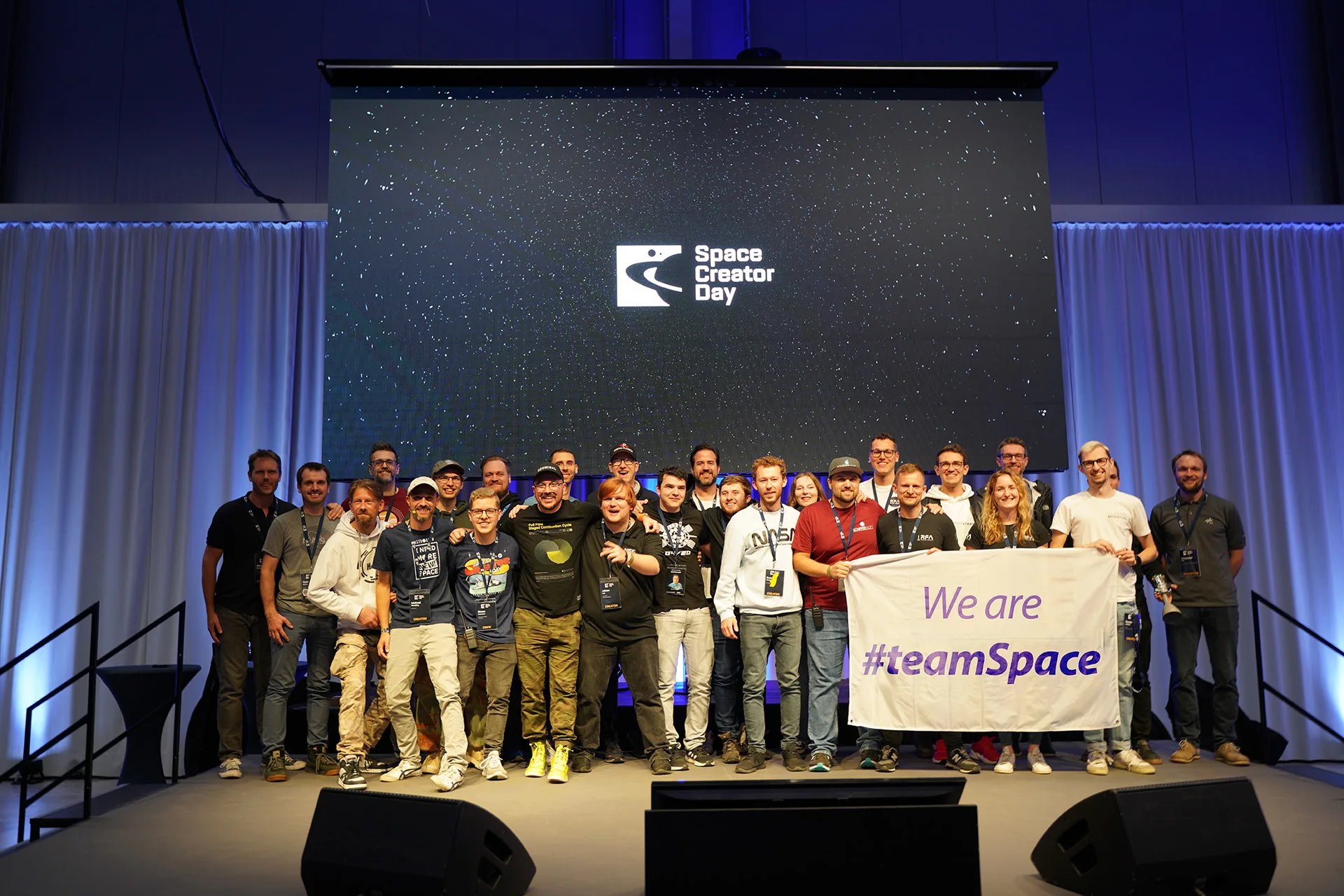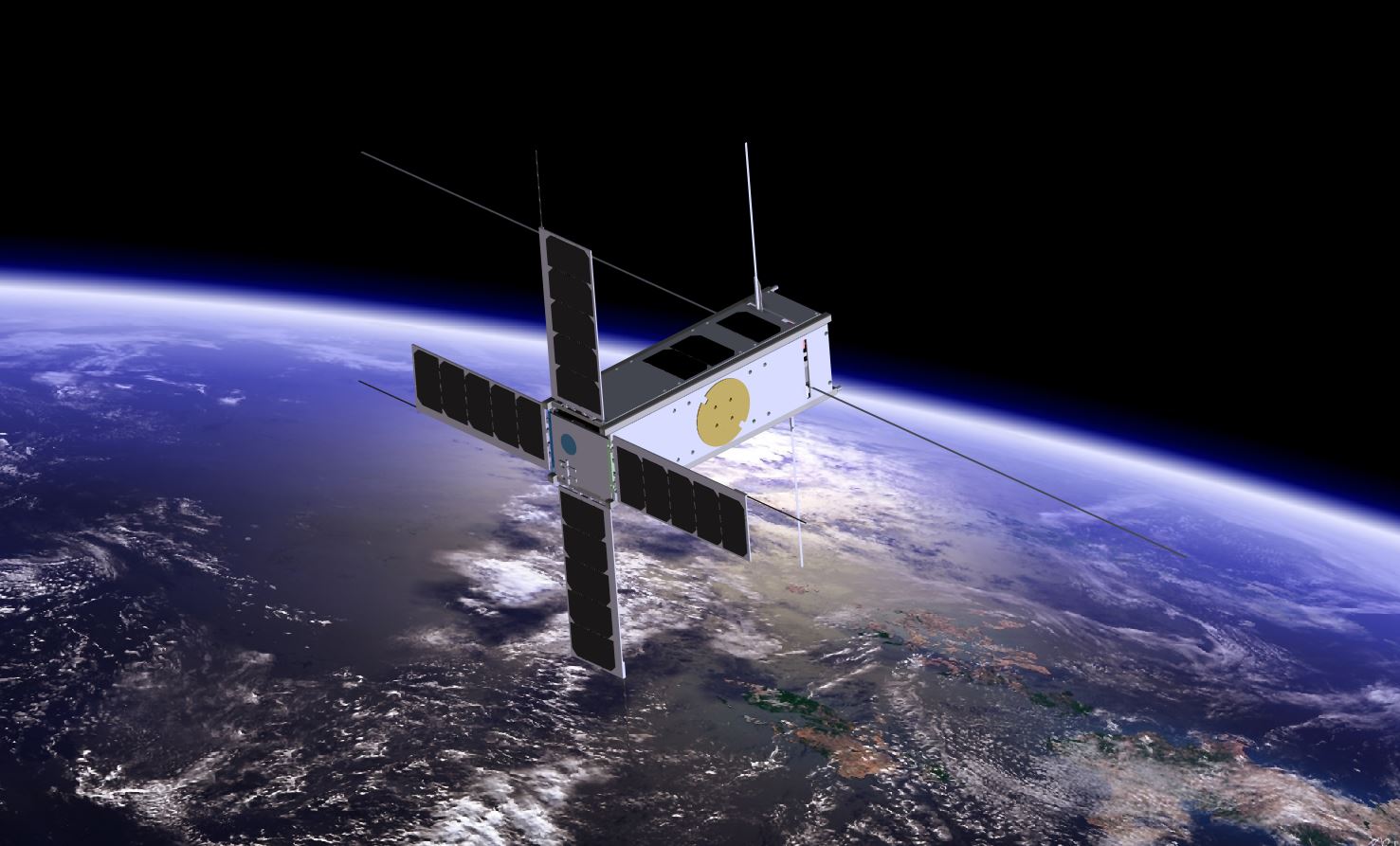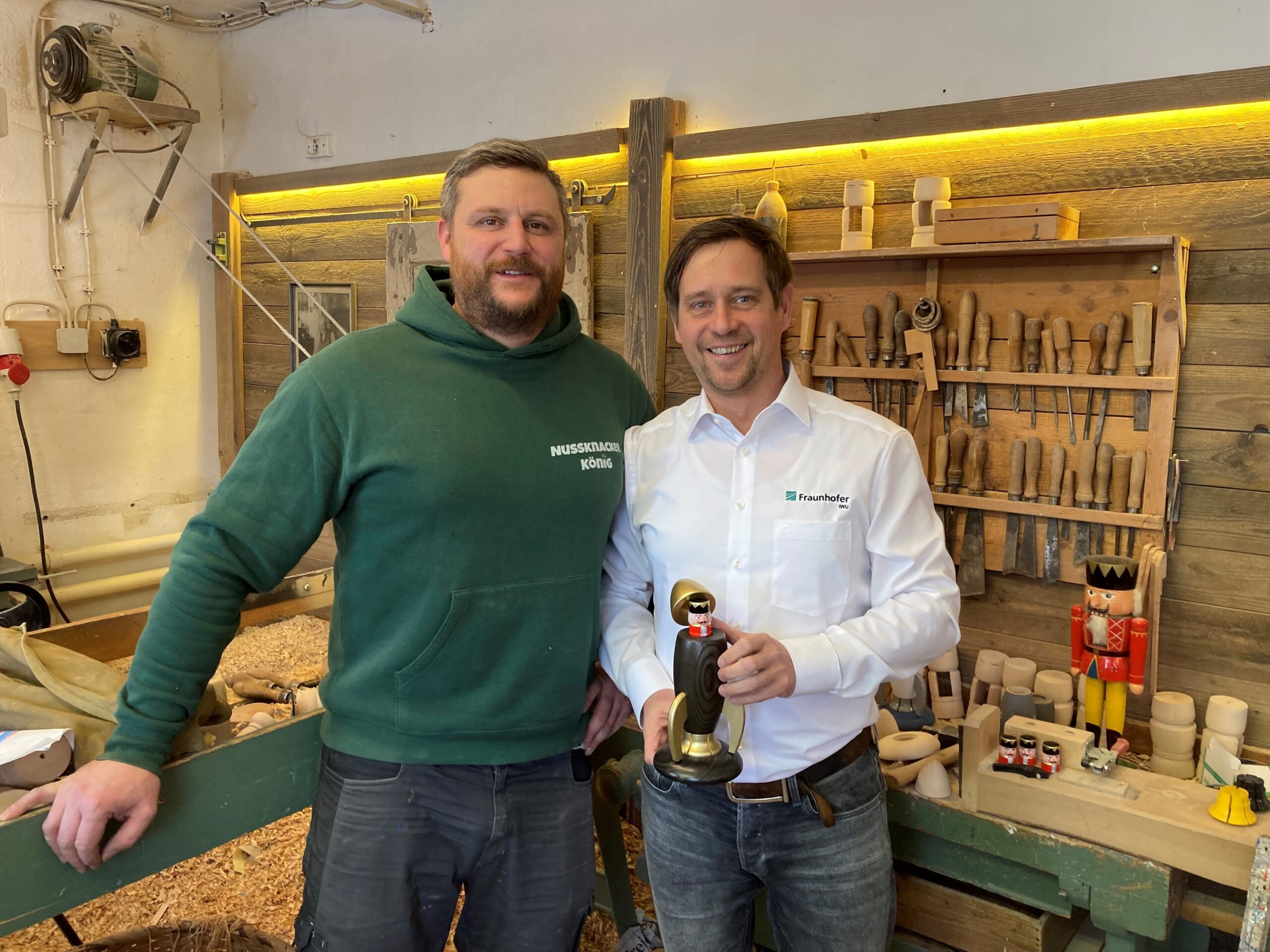
Craftsmanship meets high-tech: nutcracker with shape memory alloy
Published on Sat, 24.12.2022 – 14:51 CET in R&D, covering smarthoch3Just in time for Christmas, there is a smoking figure from Seiffen in the shape of a rocket. The highlight: as soon as a burning incense candle is placed underneath, a nutcracker appears as if by magic. What sounds like a nice gimmick at first glance, however, impressively shows how results from space research find their way into our everyday lives. The joint path of high-tech and craftsmanship was paved by the Fraunhofer IWU, the craftsman Markus Fuechtner and, above all, the innovation network smart3.
The principle sounds impressively simple: A small spring with shape memory alloy (SMA) inside a wooden rocket ensures that the heat from an incense candle moves a small nutcracker upwards. But behind this new product from Fuechtner are several months of hard work and intensive collaborations.
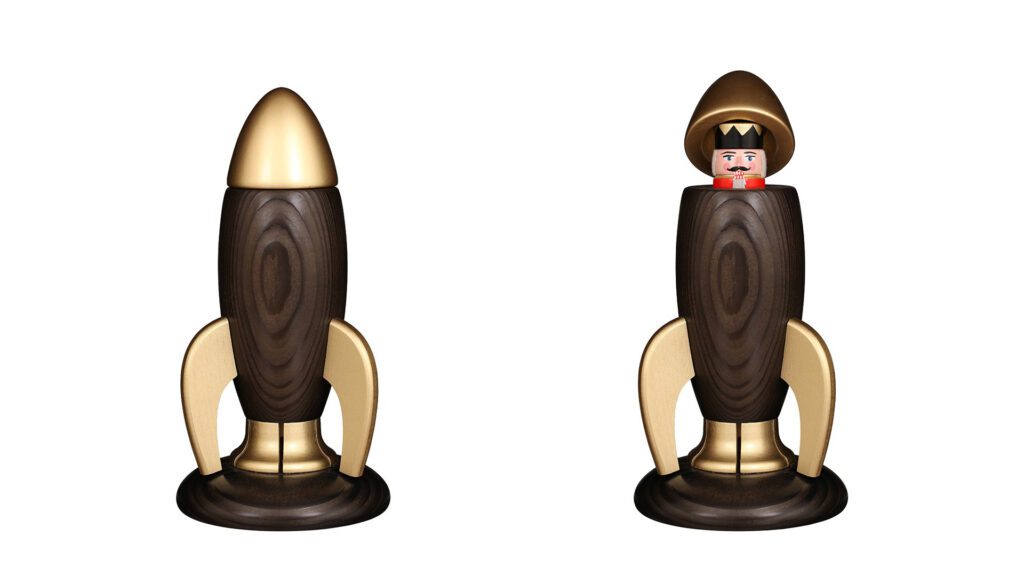
© Markus Füchtner / Astrodrom
As early as May 2021, the SMWA (Saxon State Ministry of Economics and Labor, Sächsisches Staatsministerium für Wirtschaft und Arbeit) organized a cluster regulars' table (virtual due to the Corona pandemic). Subsequently, smart3 participated in the SPIELZEUG.MACHER.FESTIVAL in Seiffen in the Ore Mountains, establishing many contacts with regional artisans. Several reciprocal visits to the Denkstatt in Seiffen and to the Fraunhofer IWU in Dresden followed. In July 2022, Markus Fuechtner and Holger Kunze, managing director of smart3, finally got to know each other at a workshop on smart materials. From then on, they developed the idea of the SMA smoke rocket together.
Nutcracker on the ISS - "The world is nut enough"
That it would be a rocket, of all things, is no coincidence. In 2016, Markus Fuechtner created a 12-cm-tall ambassador for the Ore Mountains in the form of "Travel Nutcracker Wilhelm", who has already visited more than 40 countries around the world. The goal is to make stops in every country "and beyond," as Fuechtner mentioned in a television broadcast. Curator and exhibition organizer Alexander Ochs, who sits on the Chemnitz 2025 Capital of Culture committee, heard this aside. He made contact with space flight expert and exhibition organizer Tasillo Roemisch, who in turn lobbied the ESA to allow Wilhelm to fly to the ISS. After testing and approval, the Nutcracker then launched to the ISS on a Falcon 9 as part of the CRS-23 mission on August 29, 2021. Matthias Maurer followed on November 11, 2021, and sent greetings to the toy village of Seiffen from orbit on the 4th of Advent (December 19).
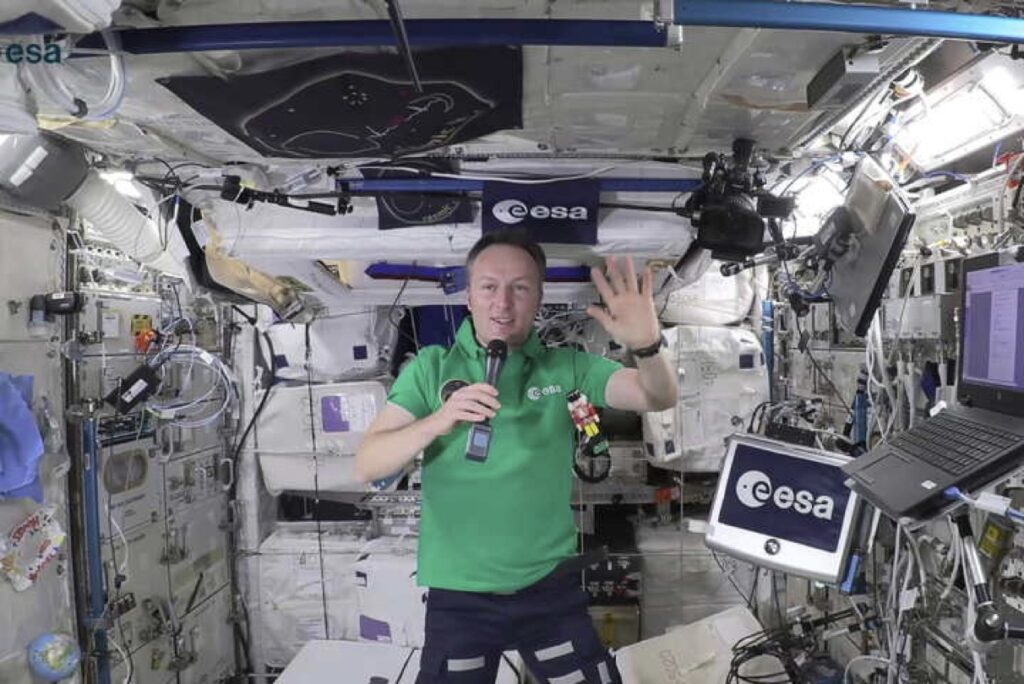
© dpa/Stadt Chemnitz
In addition to Fuechtner's inventor's workshop, the entire region also benefits from the associated media presence. Because while the Ore Mountains are well positioned and widely known from a tourism perspective, other sectors of the economy are suffering massively from demographic change. In Seiffen alone, there has been a 37 percent drop in population over the last three decades. As a result, some 40 workshops are already at a standstill due to unresolved succession issues. Many of these are family businesses with a long tradition - Markus Fuechtner, for example, is already running his in the eighth generation. Just how in demand "Wilhelm's Smoking Rocket" is, despite its hefty price (from 235 euros), can also be seen from its delivery times. Although it is already in production, it will probably not be ready for its buyers until Advent 2023 at the earliest.
Shape Memory Alloy: smart3 is connecting arts and crafts with high tech
Nevertheless, the technology behind the smoke rocket has now been filed for a joint patent by Meet the Nutcracker UG and Fraunhofer IWU through smart3. As Europe's largest network for smart materials, the initiative pursues the goal of developing new and innovative products based on smart materials. These include thermal shape memory alloys (SMA), magnetic shape memory materials (MSM), piezoceramics and dielectric elastomer actuators (DEA). These have long been established in space flight, including in the tires of the Mars rover Curiosity and also in CubeSats. Actuators with SMA, for example, enable numerous new applications. Moreover, they can be tested extensively on Earth, do not require additional lubrication and, unlike pyrotechnics and burning wires, do not generate debris in orbit.

© Fraunhofer IWU / smart3
As Holger Kunze points out in an interview with Astrodrom, the use of a spring with shape memory alloy in a smoke rocket shows that this technology can certainly be of importance in everyday life on Earth. Above all, however, that tradition and high-tech are indeed compatible and that new products can be created from them.
One of our core competencies is to shift the complexity of smart materials from the handling level to the material level. At smart³, we had the idea of using shape memory alloys in figurines or objects of the Ore Mountains arts and crafts. This is obvious in that shape memory alloys react to heat and Christmas is inextricably linked with candles and incense. And from the heat 'produced' from this, movement can be brought into the figures or objects with SMA, which is not possible otherwise. Thanks to our network, we got to know Markus Fuechtner, a partner with whom we could implement this idea. So you can see from the smoke rocket what added value networks can bring.
Holger Kunze, CEO smart3
smart materials as an answer to limited resources, climate change and the shortage of skilled workers
However, the areas of application for smart materials are far more diverse. For example, they can be used to create self-shading window panes. Intelligent implants are conceivable in the field of medicine. In production technology, information about the condition of a system can be obtained directly. And in automotive engineering, piezo elements can be used to generate energy from minimal vibrations. Last but not least, they are also suitable for countering the shortage of skilled workers. Because as you can see from the example of the Seiffen smoke rocket, even seemingly dusty professions can be brought into the here and now. And above all, you can now say with a clear conscience a phrase that is frowned upon among space flight enthusiasts: "There's smoke coming out of the rocket."
